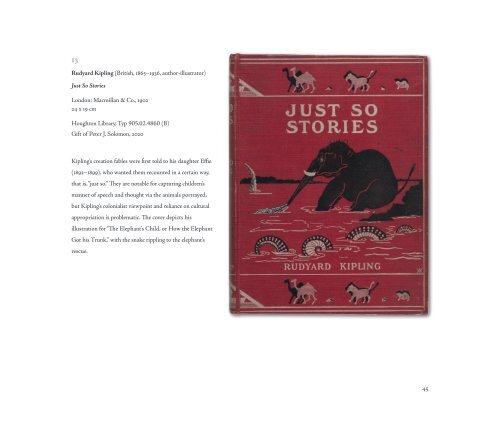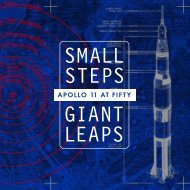Animals Are Us: Anthropomorphism in Children’s Literature; Celebrating the Peter J. Solomon Collection
Why do we tell stories to children through and about animals? Are there reasons why we shouldn’t? Animals Are Us invites explores these questions and more through influential historic examples of anthropomorphism in dialogue with contemporary books drawn from the collection of Peter J. Solomon (Harvard College Class of 1960, MBA 1963) and the holdings of Houghton Library. The exhibition invites you to engage critically with animal anthropomorphism, and delight in the artfulness of this enduring literary genre. Catalog of an exhibition on view at Houghton Library, Harvard University, September 1, 2021 - January 7, 2022.
Why do we tell stories to children through and about animals? Are there reasons why we shouldn’t? Animals Are Us invites explores these questions and more through influential historic examples of anthropomorphism in dialogue with contemporary books drawn from the collection of Peter J. Solomon (Harvard College Class of 1960, MBA 1963) and the holdings of Houghton Library. The exhibition invites you to engage critically with animal anthropomorphism, and delight in the artfulness of this enduring literary genre.
Catalog of an exhibition on view at Houghton Library, Harvard University, September 1, 2021 - January 7, 2022.
You also want an ePaper? Increase the reach of your titles
YUMPU automatically turns print PDFs into web optimized ePapers that Google loves.
13<br />
Rudyard Kipl<strong>in</strong>g (British, 1865–1936, author-illustrator)<br />
Just So Stories<br />
London: Macmillan & Co., 1902<br />
24 x 19 cm<br />
Houghton Library, Typ 905.02.4860 (B)<br />
Gift of <strong>Peter</strong> J. <strong>Solomon</strong>, 2020<br />
Kipl<strong>in</strong>g’s creation fables were first told to his daughter Effie<br />
(1892–1899), who wanted <strong>the</strong>m recounted <strong>in</strong> a certa<strong>in</strong> way,<br />
that is, “just so.” They are notable for captur<strong>in</strong>g children’s<br />
manner of speech and thought via <strong>the</strong> animals portrayed,<br />
but Kipl<strong>in</strong>g’s colonialist viewpo<strong>in</strong>t and reliance on cultural<br />
appropriation is problematic. The cover depicts his<br />
illustration for “The Elephant’s Child, or How <strong>the</strong> Elephant<br />
Got his Trunk,” with <strong>the</strong> snake rippl<strong>in</strong>g to <strong>the</strong> elephant’s<br />
rescue.<br />
45



